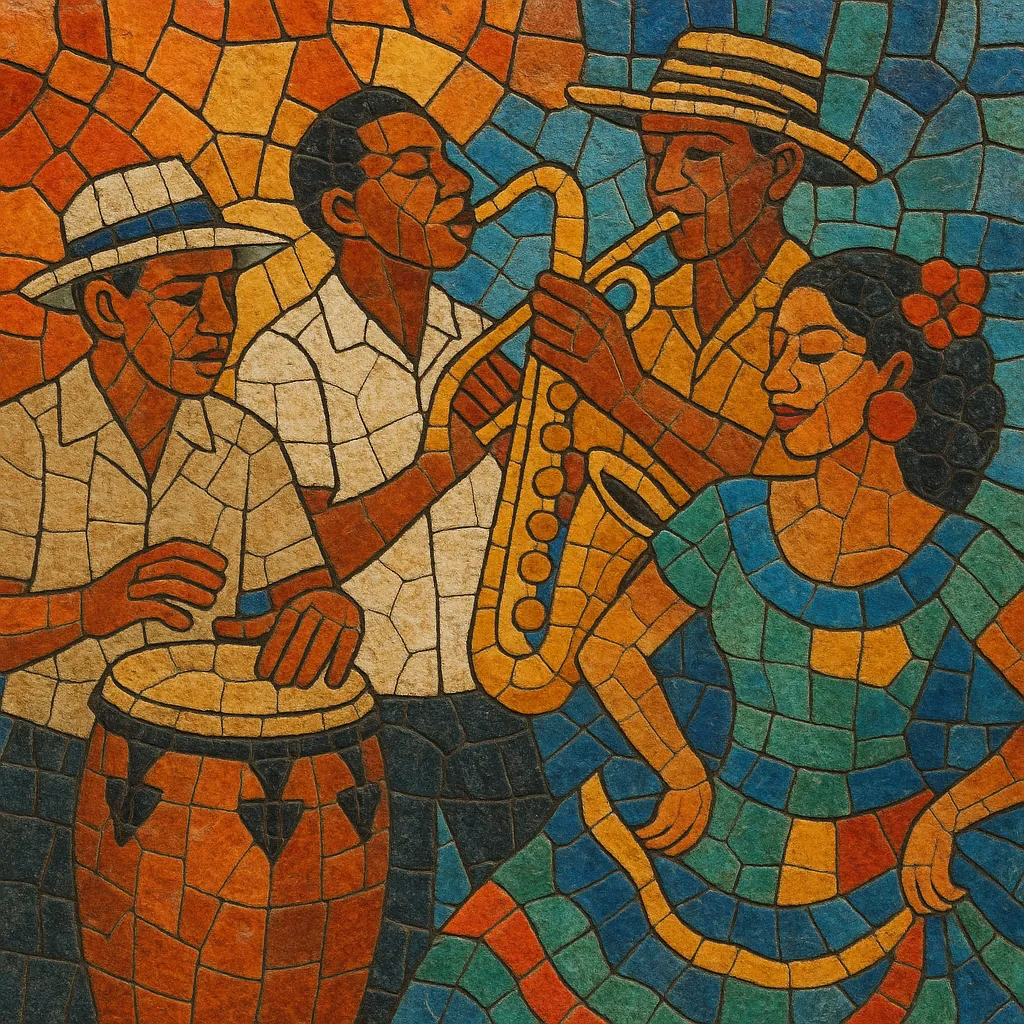Merecumbé is a Colombian dance music style created by composer and bandleader Pacho Galán on Colombia’s Caribbean coast. As its portmanteau name suggests, it fuses the brisk two-step drive of merengue with the syncopated swing and percussion colors of cumbia, arranged for coastal big-band orchestras.
Characterized by bright brass riffs, woodwind counterlines, and a propulsive 2/4 feel, merecumbé balances merengue’s forward momentum with cumbia’s guacharaca-and-conga groove. The result is festive, melodic, and irresistibly danceable music that became a staple of mid‑20th‑century tropical dance floors in Colombia and neighboring Venezuela.
Merecumbé emerged in the 1950s in Barranquilla, Colombia, when Francisco “Pacho” Galán synthesized two dominant Caribbean rhythms—merengue and cumbia—into a fresh, modern big‑band format. Drawing on the orquesta costeña tradition (trumpets, saxophones, trombones, piano, bass, and a battery of Caribbean percussion), Galán aligned merengue’s driving 2/4 pulse with cumbia’s syncopated patterns and timbres, coining the name “merecumbé” to signal its hybrid DNA.
Galán, known as “El Rey del Merecumbé,” popularized the style through hit tunes and relentless touring. Signature pieces like “Ay, Cosita Linda” traveled widely across radio and ballroom circuits, inspiring Colombian and Venezuelan orchestras to adopt the rhythm. Bands such as Billo’s Caracas Boys and Los Melódicos helped circulate merecumbé throughout the tropical dance ecosystem alongside porro, cumbia, mambo, and bolero.
While it never eclipsed cumbia or salsa globally, merecumbé secured a lasting niche within Colombian and Venezuelan tropical repertoires. Its arrangements, rhythmic feel, and repertoire became standards for orquestas bailables, shaping set lists at festivals, carnivals, and salon dances. Today, merecumbé remains a recognizable groove in classic tropical orchestras and continues to be revived by contemporary bands honoring mid‑century coastal sounds.


